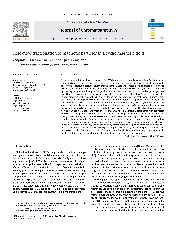摘要
Although magnetic field-flow fractionation (MgFFF) is emerging as a promising technique for characterizing magnetic particles, it still suffers from limitations such as low separation efficiency due to irreversible adsorption of magnetic particles on separation channel. Here we report a novel approach based on the use of a cyclic magnetic field to overcome the particle entrapment in MgFFF. This cyclic field is generated by rotating a magnet on the top of the spiral separation channel so that magnetic and opposing gravitational forces alternately act on the magnetic particles suspended in the fluid flow. As a result, the particles migrate transversely between the channel walls and their adsorption at internal channel surface is prevented due to short residence time which is controlled by the rotation frequency. With recycling of the catch-release process, the particles follow saw-tooth-like downstream migration trajectories and exit the separation channel at velocities corresponding to their sedimentation coefficients. A retention model has been developed on the basis of the combined effects of magnetic, gravitational fields and hydrodynamic flow on particle migration. Two types of core-shell structured magnetic microspheres with diameters of 6.04- and 9.40-mu m were synthesized and used as standard particles to test the proposed retention theory under varying conditions. The retention ratios of these two types of particles were measured as a function of magnet rotation frequency, the gap between the magnet and separation channel, carrier flow rate, and sample loading. The data obtained confirm that optimum separation of magnetic particles with improved separation efficiency can be achieved by tuning rotation frequency, magnetic field gradient, and carrier flow rate. In view of the widespread applications of magnetic microspheres in separation of biological molecules, virus, and cells, this new method might be extended to separate magnetically labeled proteins or organisms for multiplex analyte identification and purification.
- 出版日期2011-6-24
- 单位天津大学
